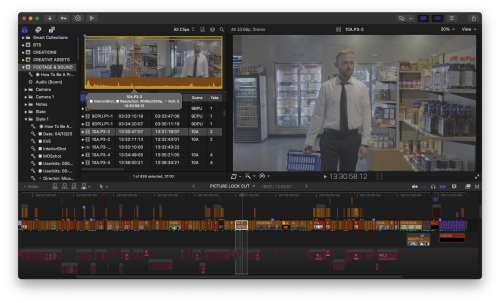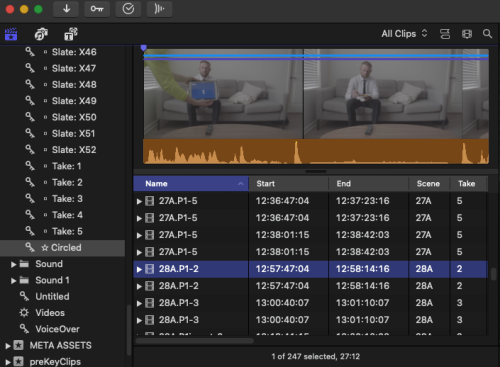At the beginning of this year, I wrote and directed a short film for my Production I class at Kent State University. This is Part Four of a four-part blog series dives in-depth into the process of creating How to Be a Productive Member of Society, my first [proper] short film… because this was the first film I produced and directed that had a complete and proper film set, planning process, production process.
<– Click here to read Part Three
Postproduction
The postproduction process had actually begun a little bit before production completed. The class had required that we submit a rough draft edition of the film on April 11th, two days before our final [extra] shoot day. This wasn’t originally planned, but alas, the hiccups we ran into with production caused this to happen, which in turn caused the rough draft to be incomplete and feature more placeholder shots than I wanted, but that was alright. I did stay up for 10 straight hours working on it, which led to a period of me being awake for nearly 40 hours since I was so busy. I do not recommend replicating that at all.

Luckily, some steps I took during preproduction and production helped make postproduction smooth and easy, something that was extremely necessary for a project of our ambition to be completed by the required time. Some of these steps included the usage of MovieSlate, which I spoke a little bit about earlier.
MovieSlate allowed the shots we took to be directly linked with our notes and reports onset, utilizing timecode, file metadata, and the robust keyword logging system inside Final Cut Pro, which was the NLE I was using for postproduction.
This saved me hours in post, because once I imported the shots from the camera, they could be automatically linked to every single piece of information I had on them, instead of me (or, what would typically be the job of an Assistant Editor) inputting and sorting that manually. This included data such as the scene and take numbers, any notes, and whether the take was good or not (among many more pieces of data). This all automatically showed up as keywords in Final Cut Pro, so I could sort clips by that criteria, instead of referring to separate reports and logs on paper.


I primarily handled postproduction; I had hoped to bring on a good friend of mine to do some color grading work on the film, but his schedule did not allow for it. For a similar reason, the film doesn’t have a superb audio mix; I had to handle that as well since I did not have anybody available to be devoted to such. And since I had not yet taken Kent State’s Sound for Picture class, there were some oversights and mistakes I made in the audio mixing department. Luckily I was able to have an experienced friend assist in the audio booth while we were recording Keith’s voiceover dialogue.

I finally finished editing at the end of April, after many many hours. In our final two classes of the semester, we got to watch all the films made, and discuss/critique them after; a valuable part of the experience.
Reflection
I learned a lot while making this film. Not only was it my first true film set experience directing, but it was also the first time working with real actors and real locations for things and having to plan all of that out. I learned a lot about how to work with people, how to direct, how to and how not to plan, how to make things look good on camera, how to write, how to achieve your goals…. I could name so many things I learned, but it would fill up the whole page!
My biggest takeaway was to always be prepared for the unexpected. We had many unexpected scenarios pop up in this film, and though we felt like we were prepared, we weren’t prepared enough, and perhaps some better planning for those rainy days would’ve somewhat eased the damage they caused.
I also learned that not everything has to be super ambitious. Though it worked out in this instance, it was an added headache, with planning for so many different days, as well as budget and resources, stuff like that.
I’m excited to work on more films in the future, and this was another great step into the true film world.
